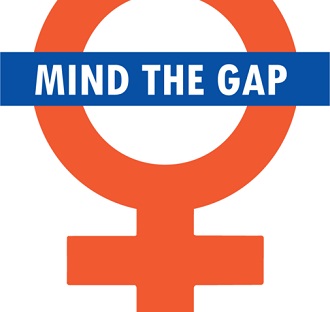Employers Given Advice Ahead of Gender Pay Rules
Employers Given Advice Ahead of Gender Pay Rules

Conciliation service Acas has published guidance to offer “practical advice” to firms before rules on tackling the gender pay gap come into force.
From April 5th, companies with at least 250 employees will have to publish a snapshot of salaries and bonuses across six key metrics and also release details about their gender pay gap within 12 months of the regulations coming into effect. Acas has said that the reporting rule will apply to 8,000 businesses and voluntary and charitable organisations in Britain, and will affect more than 11m employees.
Figures from the Office for National Statistics show the gender pay gap for full-time workers in the UK is 9.4%, and when all types of contracts are taken into account, stands at 18.1%.
Acas chief executive Anne Sharp said the new rules gave employers an opportunity to examine the issue and consider whether they could do more to develop talented women and “secure the benefits of greater gender diversity at all levels”.
Employers are encouraged to provide a narrative to give context
The guide includes practical information on how to make the required calculations and also a template for communicating the figures and their context to employees.
Employers are reminded they have the option to provide a narrative alongside the calculations, in order to outline the factors behind their results. This narrative can also provide information about the actions the company plans to take to reduce or eliminate its gender pay gap, should it have one.
The guidance suggests ways employers can explain why the figure seems high and any challenges they have encountered in reducing the gap, such as greater numbers of male employees receiving higher bonuses due to there being more of them at senior level. It also recommends employers use the narrative to demonstrate how they intend to address the pay gap in the long term.
Acas provides examples of such narratives in its guidance:
“For example, an employer might want to tackle the under-representation of women in their science and engineering roles by running a recruitment campaign for junior roles that particularly encourages women to apply. In the short term, this means more women will be at the starting salaries, which could make the gender pay gap look higher. However, in the longer term this will balance out and the under-representation should be reduced.”
The reputational risk of failing to publish the requisite information is highlighted in the guidance. It is suggested that suspicions about why an employer was failing to be transparent “could have a negative impact and be far worse than what the report would show.”
Six calculations must be made
An organisation has six calculations it must carry out. An appropriate leader, such as the chief executive, must confirm them. The calculations cover the average gender pay gap as a mean average; the average gender pay gap as a median average; the average bonus gender pay gap as a mean average; the average bonus gender pay gap as a median average; the proportion of males receiving bonuses compared to females; and the proportion of males and females when divided into four groups ordered from lowest to highest paid.
The new rules ‘shine a light’ on pay gaps, says minister
Equalities minister Caroline Dinenage said publishing details about pay gaps would help make them a thing of the past. She said:
“No-one should ever be held back just because of their gender. We now have the lowest gender pay gap on record but we still have to push further . . . Shining a light on the gaps is absolutely key to achieving equality in the workplace.”
“I encourage all employers to use this guidance, which will be an important and helpful tool for tackling the gender pay gap and promoting workplace equality,” she added.
Ann Francke, chief executive of the Chartered Management Institute, said she believed too many organisations have a “majority of entry-level roles filled by women, and the number of women reducing the higher up you go.” She said a combination of transparency and targets would help employers become more aware of the issue.
West London’s employment law experts
For advice on creating fair employment contracts and policies, resolving employment disputes, navigating TUPE, and managing employment issues surrounding mergers, acquisitions and disposals, please contact our employment lawyers on 01895 207892. Alternatively please email your details to employment@ibblaw.co.uk
Image attribution
Image Author: London Student Feminists (License: Creative Commons)
